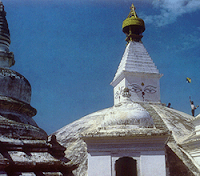Nepal Travel Destination

Founded in the 3rd century, Patan is claimed to be the oldest of Kathmandu Valleys three cities (the other two being the city of Kathmandu and Bhaktapur.) This ancient city is also known as the city of arts and its beauty it treasures is no wonder why people travel here every year. It is full of Hindu temples, Buddhist monuments, guardian deities and intricate carvings. Even though the city itself is so old, the medieval monuments in the square date back to the 16th to 18th century, mostly created by different Malla Kings.Patan Durbar Square
If one were to travel to the Patan Durbar Square they would find a collection of fine pagoda temples and stone statues. It serves as the business center of the city
and an interesting one at that. If you were walking to work
through this beautiful environment surrounded by ancient stone bathes, a palace used by past Kings, the feel of history in the air, and artwork displays throughout your route, it is certain that you would enjoy going to
work every day.
Hiranya Varna M
ahaviharBuilt in the 12th century this three-story golden pagoda of Lokeshwar. Its main attraction is the golden image of Lord Buddha and a large prayer wheel on the plinth of the vihar.
Kumbheshwar
This is a five story pagoda style temple built for Lord Shiva with touches of gold on the tippy tops of the pointy roof. There is a lovely pond that was cleaned by King Jayasthiti Malla and after he added various images of Ganesh, Sitala, and more to enhance the beauty of the pond and courtyard. There is also a natural spring in the courtyard whose source is said to be from the Gosainkundaglacial lake. Ritual bathing takes place here every year during the festival of Janai Poornima. (July/Aug)

Ashokan Stupas
They are popularly believed, though not proven without doubt to have been built by Ashoka himself. Ashoka was the Buddhist Emperor of India, these stupas stand at four differ
ent corners of Patan, giving the whole city a monastic character. All these Buddhist mounds were built in 250 AD at the time when Buddhism was making headway in the Kathmandu Valley from India.
Mahaboudha
If one would travel to Mahaboudha they would see the magnificent Buddhist temple built out of bricks – terra cotta style – is not a Nepali traditional medium but its splendor is proof how talented and adaptable the locals craftsmen can be. The Mahaboudha Temple is sometimes referred to as the temple of a million
Buddha's. Each brick used in the construction of this holy place, has a small image of the Buddha and there are 9,000 bricks used! Unfortunately the temple was leveled in the 1933 earthquake and thankfully re-built exactly to the original specifications.
Krishna Temple
The Temple dedicated to Lord Krishna demands the attention of any passerby. Its style is not native to Nepal but that does not matter because the three story stone temple has a large population of devotees and admirers alike. The complexity of the art with its great attention to details in the stone carvings, show the high level of creative skill that was around in the 16th century. The temple grounds also has yearly
festivalsincluding that of Lord Krishna's Birthday celebration (July/Aug) which is an interesting sight for locals as well as th
Machchhendranath
Temple
The Machchhendranath Temple is a popular attraction in Patan. It lies in the middle of a spacious courtyard near the edges of the local market place. An interesting clay image of Red Machchhendranath Avalokiteshwar, the God of the country, stays at its temple for six months every year. The rest of the year depends on how long the image is on display during the Red Machchhendranath Jatra
festival (March/April
) that is to help bring the rain, where the image is paraded around for all to see.
Tibetan Camp
On the outskirts of Patan there is a small population of Tibetans. They have really made this place their home by setting up numerous shrines, stupas, and even souvenir shops full of Tibetan handicrafts and prayer wheels. It is an interesting stop - of course they welcome travelers - if you have time to see a little corner of Tibetan culture in the city of Patan.
Please visit our Kathmandu Valley page for more information about the history of Patan and its Durbar Square.





No comments:
Post a Comment